Aloha & Welcome to My Blog
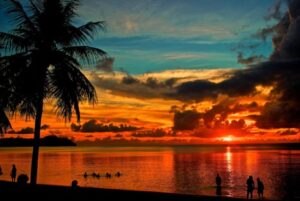
Beautiful Kwajalein Lagoon Sunset
All writers have to face into their own ideas and experiences of fear, grief, and sorrowful situations if they’re going to write about them with any authenticity; whether it’s those experienced and recalled in memoir writing, or by their characters in a novel or any instance when the plot line calls for the protagonist to encounter something fearful and then overcome it.
During a screenwriting class years ago, there was a sensitive writer who wrote about his fear and sorrow about being forced by his father to learn to fire a gun and then to kill birds … something his father considered a legitimate rite of passage for his son to become a “real” man. Fear, sorrow, grief as well as beauty, joy and loving relationships are scattered throughout our lives like so many dandelion seeds and we writers seek to do the impossible…capture those dandelion moments and write about them in a way that readers can relate and hopefully, see more clearly into similar events in their own lives.
Today’s excerpt from A Southern Belle in Paris reflects a time in my own life when I came face to face with some horrible things that Pacific islanders had and still were experiencing because of past actions taken by the United States. Because I felt so helpless, I believed that by sharing some of these incidents, it could raise awareness of what the real costs are when we put our faith and trust in weapons to bring about peace.
Today’s Excerpt from A Southern Belle in Paris:
BIKINIS, BOMBS AND BABIES
PART TWO
The American military governor of the Marshall Islands had traveled to Bikini Island and assembled the islanders to ask them if they would be willing to leave their homes temporarily so that the United States could begin testing atomic bombs. After asking what an atomic bomb was, Bikini’s leader King Juda finally agreed to let the American military test their bombs on his island home. Soon the people of Bikini were removed by the US. Navy to nearby Rongerik Atoll and left there with food supplies sufficient for several weeks. They shortly discovered that the coconut trees and local food crops were scarce and yielded little fruit. As their food supplies quickly started to dwindle, they began to suffer from starvation and fish poisoning due to the lack of edible fish in the lagoon. Within two months after their arrival on Rongerik, the islanders were begging U. S. officials to move them back to Bikini, but their home island of Bikini was too contaminated for them to return after the nuclear testing.
One month later, in March of 1946, the nuclear legacy of Bikini Atoll began in earnest when the United States detonated the largest hydrogen bomb ever tested. Called the Bravo shot, it was a 15-megaton hydrogen bomb, a thousand times more powerful than the atomic bomb dropped on Hiroshima. The Bravo test exposed the Marshallese people to near-fatal amounts of radiation that resulted in widespread radiological contamination of the people and the environment. In addition, the military placed goats and pigs aboard Navy ships anchored in Bikini’s lagoon to track the effects of radioactive fallout on animals and to see how military craft would withstand the detonations.
The Bravo test was called an unprecedented “success” and “beyond our wildest dreams” according to the American scientists who were involved in its detonation. One scientist described the aftermath of the detonation on Bikini this way: “The area was illuminated by a huge and expanding flash of blinding light. A raging fireball of intense heat that measured into the millions of degrees shot skyward at a rate of 300 mph. Within minutes the monstrous cloud filled with nuclear debris, shot up more than 20 miles and generated winds hundreds of miles per hour. These fiery gusts blasted the surrounding islands and stripped the branches and coconuts from the trees. Millions of tons of sand, coral, plant and sea life from Bikini’s reef and the surrounding lagoon waters were sent high into the air by the blast.”
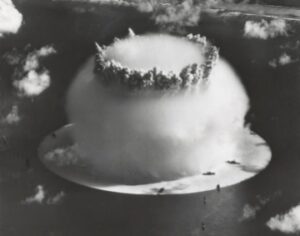
The blast radius. Notice the battle ships as a size comparison
The island residents of Rongelap Atoll, located downwind about 125 miles east of Bikini, said they were never warned to evacuate and were hit with direct radioactive fallout. They described the explosion very differently than the scientists. “Soon after the blast, we all watched as a white, snow-like ash began to fall from the sky. We didn’t know what was happening and watched in amazement as two suns rose high in the sky. Soon the dust was so thick it covered the whole island and turned our drinking water into a yellow color. Mothers watched as their children played in the fallout because we didn’t understand the danger. Soon people began to experience severe vomiting and diarrhea and our hair began to fall out, causing terror and panic. Two days after the test, our people of Rongelap were finally taken to nearby Kwajalein Island for medical treatment.”
After the Bravo explosion, both U.S. and Marshallese workers cleaned radioactive debris from the ground-zero location, either bulldozing it directly into the ocean or storing it in temporary containment sites. It was the beginning of over sixty years of migration for the inhabitants of Bikini to various other islands throughout the Marshallese chain where they often lived in perilous and near starvation conditions while awaiting their return home to Bikini as promised by the United States. Experts have agreed their home island will be uninhabitable for the next 30,000 years due to the radioactive fallout and contamination still present
*****
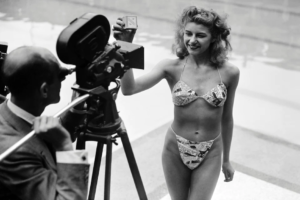
Micheline Bernardini, a French nude dancer, was the only person designer Louis Reard could find to model his bikini when it debuted in Paris, July, 1946 (Getty Images)
In another part of the world in July of 1946, an extraordinary series of events unfolded which brought the island of Bikini into the international spotlight. A French fashion designer named Louis Reard had designed something he felt sure would stir the masses into a buying frenzy, but he didn’t have a name for it. After searching diligently for just the right name to label his creation, in an unbelievable quirk of fate, the U. S. Military came to his rescue. Four days before he was to unveil his new creation to the haute couture world in Paris, a news broadcast announced that the U. S. Military had exploded a nuclear device near several small islands in the South Pacific called Bikini Atoll. On July 5th Reard showed his new creation to the world, calling it a bikini. When criticized for naming his creation after something so devastating, Reard claimed he had named his creation bikini after the islands and not the atomic blast.
But Bikini Atoll, the remote and little-known South Pacific Island, was far more than just a name attached to the daring, two-piece minuscule article of women’s clothing created by Frenchman and designer Louis Reard. Bikini, the place, represented a darker side of the United States’ foreign policy whereby military and government officials had taken over an entire region and carelessly, ignorantly destroyed its environment, its people and their way of life. Despite government propaganda to the contrary, the story of Bikini Atoll was how the United States became a nuclear super power through its successful nuclear testing program conducted in the Marshall Islands at the expense of the islanders and the environment.
Some twenty years after the nuclear testing program had ended, my family and I found ourselves living in the same environment and potentially suffering from its ill effects, just as the native islanders had suffered for decades. No one at the time seriously connected our baby Marie’s breathing difficulties to the extensive radiation fallout from nuclear testing done in the past that might still be present in the coral dust and water. Thankfully, my baby daughter was able to accept the soy formula the doctors had given her at Tripler Army Hospital and her breathing difficulties had subsided, but when we returned stateside, as her baby teeth began to come in, they were the color of grey dishwater. When tested for allergies, she was so highly allergic to such a wide range of food and environmental pollens that she had to suffer weekly injections for many years.
According to the stories and histories recorded by the Micronesian people, the United States’ policy in the region had resulted in unspeakable genocide against the indigenous people of the Marshall Islands.
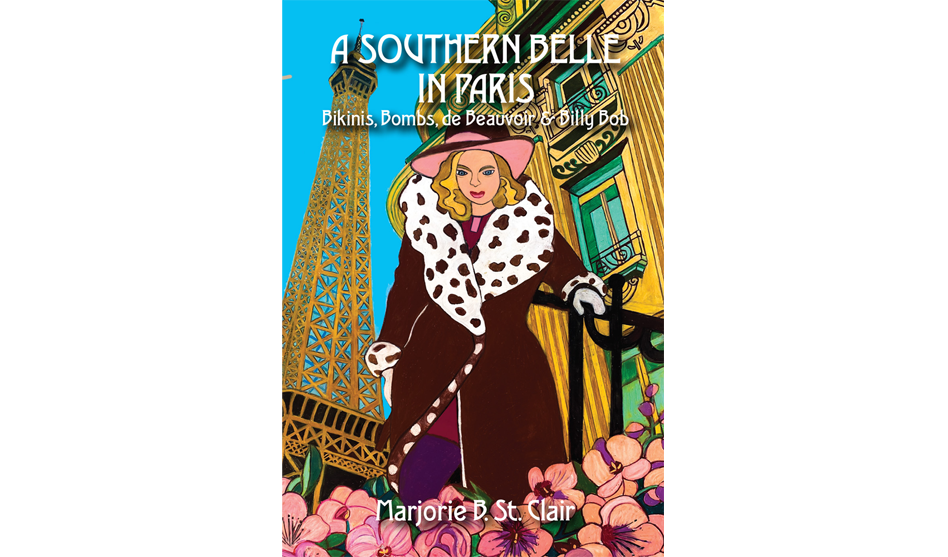
If you want a signed copy of A Southern Belle in Paris, place your pre-order HERE
Do you have a copy of my writing workbooks?
Wild Women Write: Reconnecting with the Wild Feminine
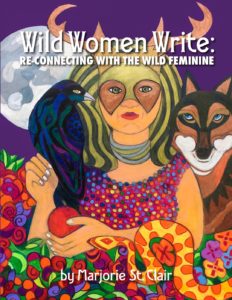 Wild Women Write takes you to the core of your instinctual feminine essence by familiarizing you with tales & stories of women who walked in their power, providing archetypal models to reclaim & reconnect to that sacred place within ourselves that is both wild and powerful. Writing & art exercises help you to dive deep into your own unique self & to express what you find there!
Wild Women Write takes you to the core of your instinctual feminine essence by familiarizing you with tales & stories of women who walked in their power, providing archetypal models to reclaim & reconnect to that sacred place within ourselves that is both wild and powerful. Writing & art exercises help you to dive deep into your own unique self & to express what you find there!
Writes of Passage: Writing Through the Seasons of Your Life
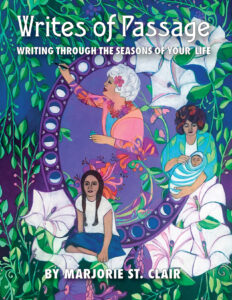 Have you been wanting to write your memoir… tell your life story but don’t know where to start? Writes of Passage is the perfect book to help you get started. For each of the four phases of your life: childhood, young adult, mature adult, & elder, there are writing & art exercises that will give you all the material you’ll need to begin your memoir!
Have you been wanting to write your memoir… tell your life story but don’t know where to start? Writes of Passage is the perfect book to help you get started. For each of the four phases of your life: childhood, young adult, mature adult, & elder, there are writing & art exercises that will give you all the material you’ll need to begin your memoir!
Follow me on Facebook, at WritersAdventure.com, at LinkedIn, and at Goodreads.
Visit www.writersadventure.com for more info & to connect.
Aloha! Marjorie
